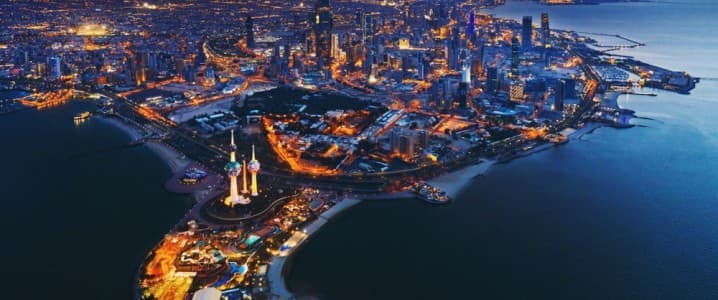Kuwait Looks At Huge Wealth Fund To Move Beyond Oil

Kuwait’s life-after-oil fund may have become one of the world’s biggest sovereign wealth funds thanks to the country’s healthy oil industry, as it continues to prepare for a life after oil as it invests heavily in the sector while it still can. The Future Generations Fund, managed by the Kuwait Investment Authority or KIA, is thought to be worth around $700 billion at present, according to sources in the country, after closing at $670 billion at the end of the fiscal year in March, making it the world’s largest oil fund after those of Norway and China.
The fund has steadily grown in recent years as Kuwait attempts to invest money earned from oil and gas to eventually decrease its dependency on the sector. Around half of its investments are based in the U.S., where Kuwait is seeing a significant return on its S&P 500 stocks and shares, following an uncertain year during the pandemic.
However, many have highlighted the need for Kuwait to diversify its economy beyond oil and gas for years, encouraging the country not to put all its eggs in one basket. A report from earlier this year suggested that the low global demand in 2020, driven by the pandemic, and this year’s OPEC+ cuts in production have reduced the income from Kuwaiti oil.
Because of its oil dependence, and other knock-on effects of the pandemic, Kuwait saw around an 8 percent decrease in its GDP in 2020. But the outlook is hopeful as the country is expecting its GDP to grow by 2.5 percent in 2020, owing to greater investment in its non-oil sector.
As oil demand recovery steadily improves, OPEC+ is expected to reduce cuts over the summer months to resume pre-pandemic production levels. In addition, Kuwait’s originally slow vaccine rollout is finally picking up pace, meaning restrictions are expected to ease so businesses can reopen. But the last year and a half of turbulence has taught Kuwait that it cannot depend solely on its oil sector forever.
Kuwait is not the only state in the Middle East to look for greater economic diversification as several Gulf states realised the importance of investing beyond oil during the 2014 oil price crash, although many were not prepared for this crash leading to the need for austerity policies.
Bahrain, Kuwait, Oman, Qatar, Saudi Arabia, and the United Arab Emirates have all relied heavily on oil and gas for the last half a century, building their economies on the foundation of energy. Now, several are looking at hydrogen and other renewable options as a means of modernising their already strong energy sectors in line with global demand for greener energy.
But Kuwait still has a long way to go, according to a Moody report, with heavy investment in oil and gas expected to continue throughout the 2020s. Moody suggests that little progress has been made since the 2014 crash, despite attempts at diversification, and oil dependence in the region will continue for at least the next decade. At present, oil and gas production in Gulf states continues to contribute around 20 percent to GDP, account for 65 percent of total exports and around 50 percent of state revenues.
Alexander Perjessy, VP and senior analyst at Moody explains, “The announced plans to boost hydrocarbon production capacity and government commitments to zero or very low taxes make it unlikely that heavy reliance on hydrocarbons will diminish significantly in the coming years.”
So, while Kuwait’s oil wealth fund shows significant promise, the country and region have a long way to go before they can decrease their dependence on oil and gas, as Kuwait and most other Gulf states will continue to invest heavily in the industry so long as global demand remains.




